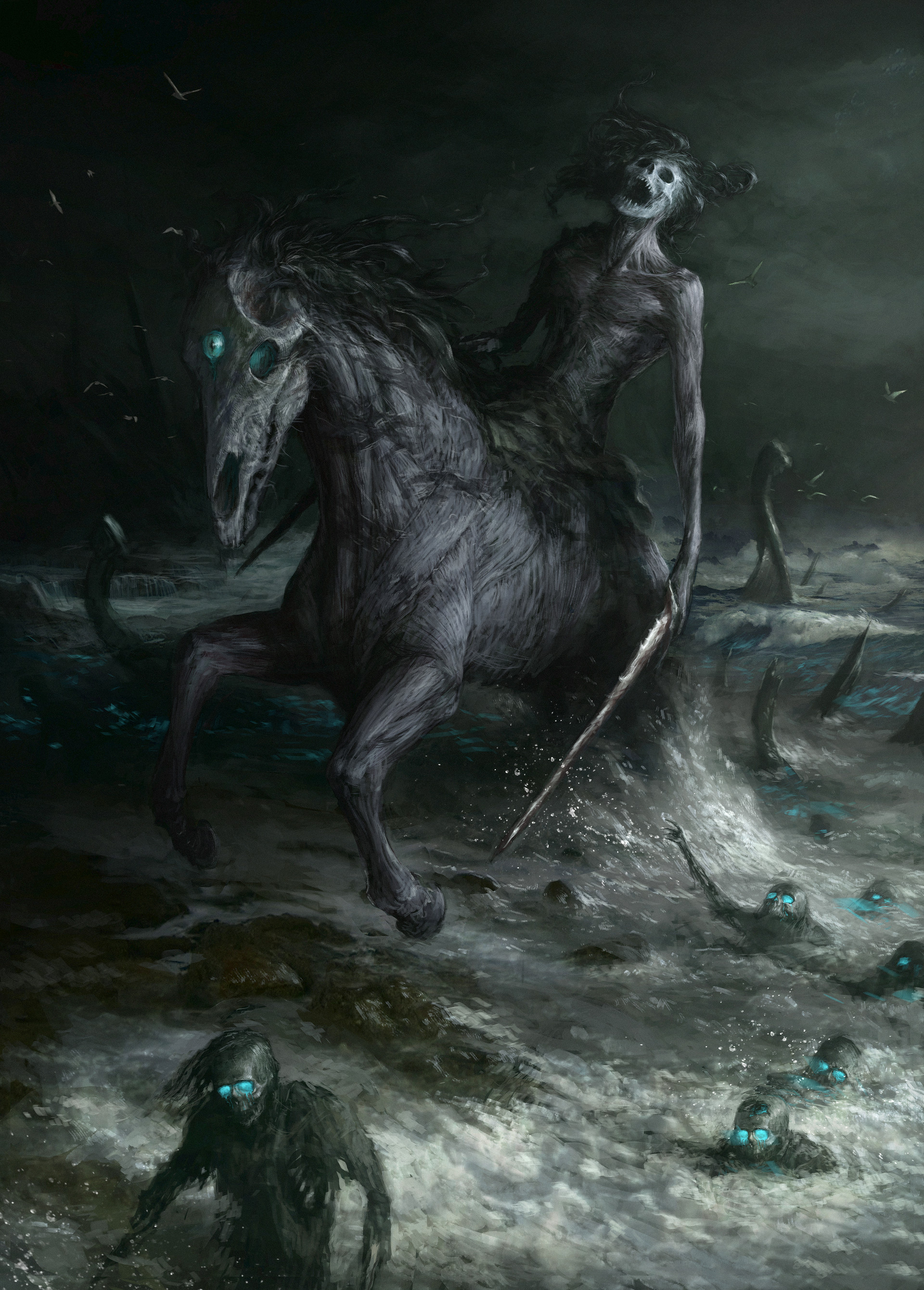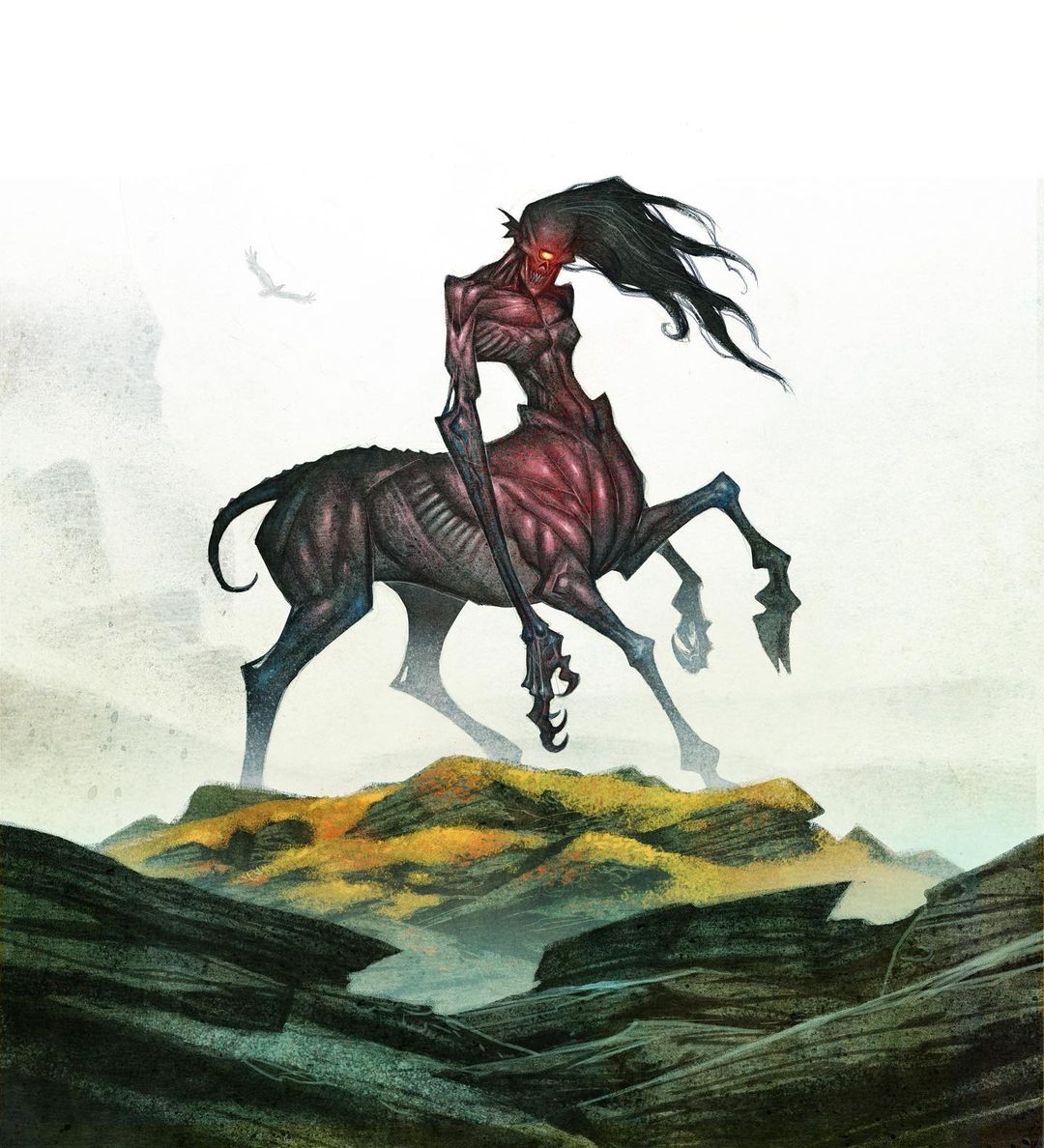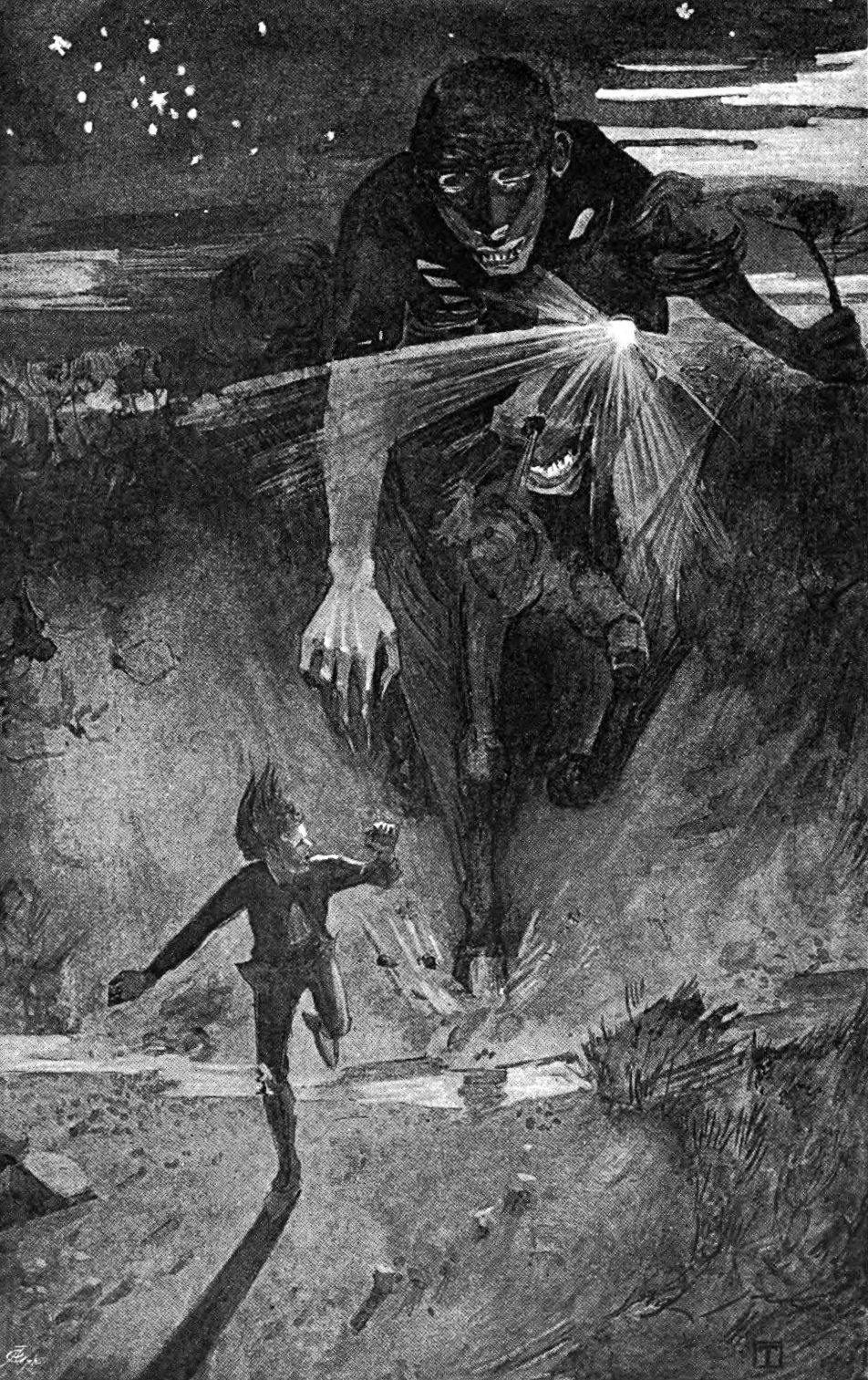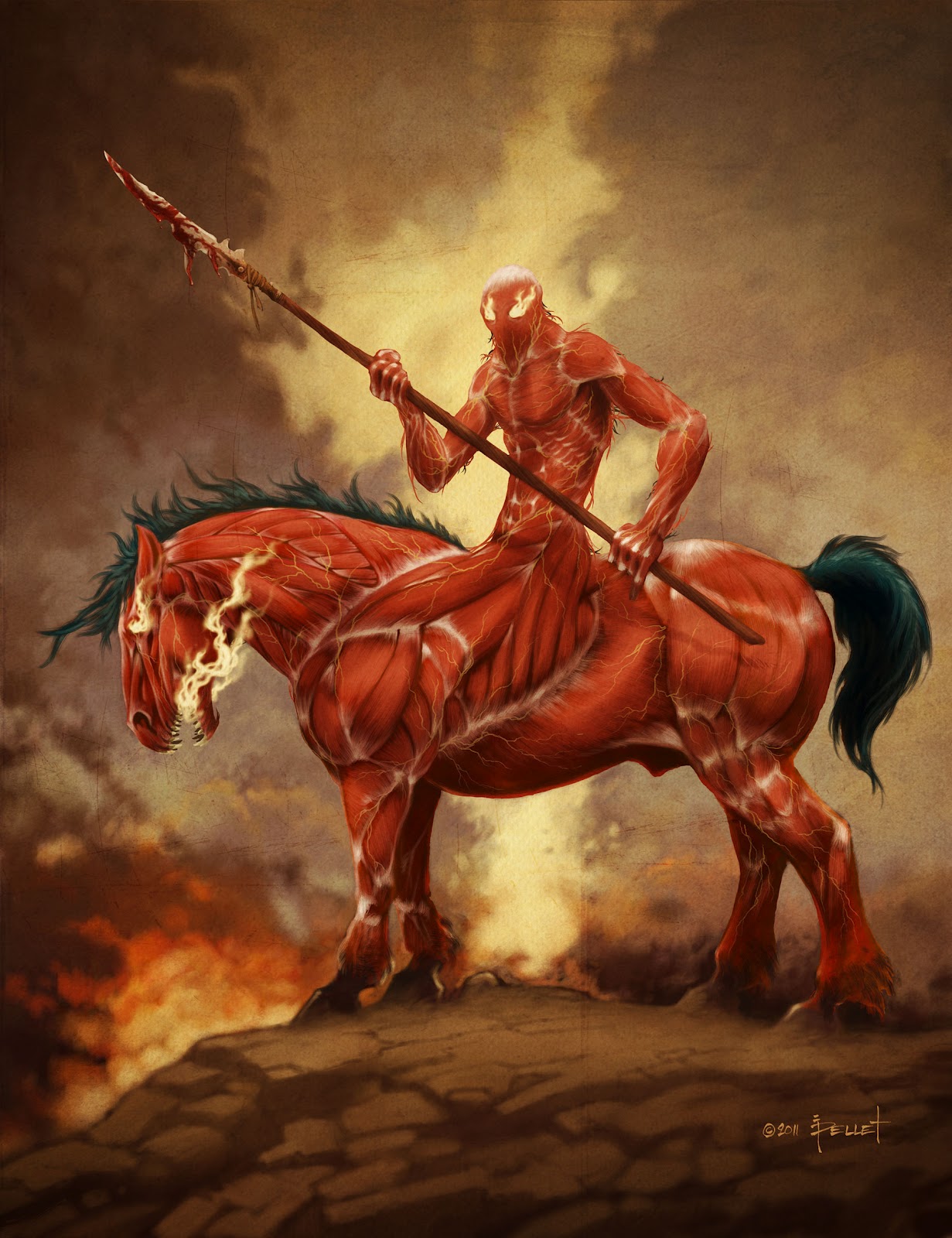Сегодня у огров на первое — суп, на второе — жаркое. Странник, третьим будешь?
Bestiary.us
энциклопедия вымышленных существБыстрый переход
- Бестиарий «Волчонка» Материалы портала посвящены мифологии сериала "Волчонок" (Teen Wolf), различным легендам и поверьям о вервольфах и других существах, встречаемых в сериале.
- Транслятор имен Здесь у Вас есть уникальная возможность узнать, как могло бы звучать Ваше имя на языках различных вымышленных рас. При этом результат имеет смысловую нагрузку. Так к примеру, эльфийские имена собираются по грамматическим правилам квэнья и других эльфийских языков исходя из значения Вашего настоящего имени.
- Рождественский бестиарий Портал посвящён существам и обычаям, относящимся к традиционным зимним праздникам, в центре которых находится Рождество. Подобно многим сверхъестественным существам этого периода, портал появляется в нашем мире только на время, с 5 декабря по 15 февраля.
Nuckelavee
Нукелави — в фольклоре шотландских оркнейских островов, морское чудовище, наподобие жуткого кентавра без кожи
Nuckelavee — is a sea monster (like a terrible centaur without skin) in the folklore of the Orkney Islands
Нукелави — в фольклоре шотландских оркнейских островов, морское чудовище, наподобие жуткого кентавра без кожи
Nuckelavee — is a sea monster (like a terrible centaur without skin) in the folklore of the Orkney Islands
Нукелави — в фольклоре шотландских оркнейских островов, морское чудовище, наподобие жуткого кентавра без кожи
НукелавиВ фольклоре шотландских оркнейских островов, морское чудовище, наподобие жуткого кентавра без кожи по-русскиNuckelaveeIs a sea monster (like a terrible centaur without skin) in the folklore of the Orkney Islands in english
Nuckalavee —
Nuckelavee —
Накилеви —
Наккилэйви —
Наклави —
Одно из самых отвратительных порождений шотландского воображения, а шотландцы знают толк в ужасах. Это было морское чудовище с Оркадских островов, что-то вроде жуткого кентавра, потому что, подобно кентавру, он сидел на конской спине и не имел человеческих ног. Он выходил из моря и сеял ужас на своем пути — там, где он проходил, полегал хлеб, падал скот, и любой, встретивший его, погибал от его рук. Будучи морским духом, он не переносил пресной воды, и единственным спасением от него было пересечь бегущую воду.
В "Шотландских волшебных и народных сказках" Дугласа есть заметка, которую прислал Трэйлл Деннисон. Мистер Деннисон встретил старика по имени Тэммас, который утверждал, что встречался с Наккилэйви, и после долгих уговоров согласился рассказать об этой встрече (501; 307: с.276; 216: с.599):
Tammas, like his namesake Tarn o'Shanter, was out late one night. It was, though moonless, a fine starlit night. Tammas's road lay close by the seashore, and as he entered a part of the road that was hemmed in on one side by the sea, and on the other by a deep fresh-water loch, he saw some huge object in front of, and moving towards him. What was he to do? He was sure it was no earthly thing that was steadily coming towards him. He could not go to either side, and to turn his back to an evil thing he had heard was the most dangerous position of all; so Tammie said to himself, "The Lord be aboot me, an' tak' care o' me, as I am oot on no evil intent this night!" Tammie was always regarded as rough and foolhardy. Anyway, he determined, as the best of two evils, to face the foe, and so walked resolutely yet slowly forward. He soon discovered to his horror that the gruesome creature approaching him was no other than the dreaded Nuckelavee. The lower part of this terrible monster, as seen by Tammie, was like a great horse with flappers like fins about his legs, with a mouth as wide as a whale's, from whence came breath like steam from a brewing-kettle. He had but one eye, and that as red as fire. On him sat, or rather seemed to grow from his back, a huge man with no legs, and arms that reached nearly to the ground. His head was as big as a clue of simmons (a clue of straw ropes, generally about three feet in diameter), and this huge head kept rolling from one shoulder to the other as if it meant to tumble off. But what to Tammie appeared most horrible of all, was that the monster was skinless; this utter want of skin adding much to the terrific appearance of the creature's naked body, — the whole surface of it showing only red raw flesh, in which Tammie saw blood, black as tar, running through yellow veins, and great white sinews, thick as horse tethers, twisting, stretching, and contracting as the monster moved. Tammie went slowly on in mortal terror, his hair on end, a cold sensation like a film of ice between his scalp and his skull, and a cold sweat bursting from every pore. But he knew it was useless to flee, and he said, if he had to die, he would rather see who killed him than die with his back to the foe. In all his terror Tammie remembered what he had heard of Nuckelavee's dislike to fresh water, and, therefore, took that side of the road nearest to the loch. The awful moment came when the lower part of the head of the monster got abreast of Tammie. The mouth of the monster yawned like a bottomless pit. Taramie found its hot breath like fire on his face: the long arms were stretched out to seize the unhappy man. To avoid, if possible, the monster's clutch, Tammie swerved as near as he could to the loch; in doing so one of his feet went into the loch, splashing up some water on the foreleg of the monster, whereat the horse gave a snort like thunder and shied over to the other side of the road, and Tammie felt the wind of Nuckelavee's clutches as he narrowly escaped the monster's grip. Tammie saw his opportunity, and ran with all his might; and sore need had he to run, for Nuckelaveehad turned and was galloping after him, and bellowing with a sound like the roaring of the sea. In front of Tammie lay a rivulet, through which the surplus water of the loch found its way to the sea, and Tammie knew, if he could only cross the running water, he was safe; so he strained every nerve. As he reached the near bank another clutch was made at him by the long arms. Tammie made a desperate spring and reached the other side, leaving his bonnet in the monster's clutches. Nuckelavee gave a wild unearthly yell of disappointed rage as Tammie fell senseless on the safe side of the water.
Douglas G. Scottish Fairy and Folk-Tales (646: p.198-200)
Как-то ясной звёздной ночью он брёл по узкой полоске земли между морем и пресноводным озером и вдруг увидел, как что-то движется на него. Ему показалось, что это какое-то чудовище, но он не мог свернуть ни вправо, ни влево. К тому же Тамми был наслышан, что от сверхъестественных созданий ни в коем случае бежать нельзя. Тогда он собрал всё своё мужество и медленно, но твёрдо пошёл вперёд. Вскоре Тамми понял, что это наклави. Нижняя его часть была подобна лошади, с чем-то вроде плавников на ногах, с широченной, словно у кита, пастью, из которой вырывался пар, как из кипящего котла. У него был один огненно-красный глаз. На нём сидел здоровенный безногий детина или, точнее, вырастал из его спины. Его руки доставали чуть ли не до земли, голова была не менее трёх футов в диаметре и беспрестанно перекатывалась с плеча на плечо, словно вот-вот оторвётся. Но самым жутким в облике чудовища было отсутствие кожи, виднелась красная плоть; тёмная, словно дёготь, кровь бежала по жёлтым венам. Белые сухожилия, с лошадиные путы толщиной, сокращались и растягивались во время его движения. Тамми продолжал медленно идти вперёд, охваченный смертельным страхом. Волосы поднялись дыбом, кожа стала ледяной, холодный пот сочился изо всех пор. Но он знал, бежать бесполезно, и сказал, что, если ему и суждено было умереть, он хотел, по крайней мере, видеть своего убийцу и не показать врагу спину. Несмотря на парализующий ужас, Тамми вспомнил, что слышал, будто наклави не выносит пресной воды, и поэтому старался держаться ближе к озеру. Страшный миг приближался, пасть монстра открылась, словно бездонная яма. Тамми почувствовал на лице его огненное дыхание. Длинные руки простёрлись, чтобы схватить несчастного. Пытаясь по возможности уклониться от объятий монстра, Тамми отпрянул к озеру и обрызгал колени чудища. Конь издал ржание, больше походившее на раскат грома, и отскочил к другой стороне дороги. Тамми не упустил шанса и со всех ног кинулся вперёд. Наклави развернулся и поскакал за ним с жутким рычанием. Впереди из озера в море тёк ручей, и Тамми знал, что, если только ему удастся пересечь проточную воду, он спасён. Когда он добежал до ручья, чудовище вновь попыталось схватить его своими ручищами. Тамми сделал отчаянное усилие и перепрыгнул на другой берег, оставив в лапах монстра свою шапку. Наклави в дикой ярости издал неземной вой, а Тамми рухнул без чувств на безопасном берегу ручья.
Douglas G. Scottish Fairy and Folk-Tales (307: с.277-278)
Предполагается, что образ Нукелави, как и ряда других злобных существ, служил в качестве объяснения явлений, которые островитяне в древние времена не могли объяснить иным образом; многие древние мифы были основаны на естественных явлениях, наблюдаемых в условиях бурного и переменчивого моря в районе Оркнейских островов. Оркнейские легенды испытали сильное влияние скандинавской мифологии, сюжеты из которой смешивались с традиционными кельтскими легендами, ввиду чего истоком образа Нукелави может быть мифическое существо, о котором островитяне узнали от скандинавов и черты которого соединились с образом традиционной для кельтского фольклора водяной лошади.
Nuckelavee was a monster of unmixed malignity, never willingly resting from doing evil to mankind. He was a spirit in flesh. His home was the sea; and whatever his means of transit were in that element, when he moved on land he rode a horse as terrible in aspect as himself. Some thought that rider and horse were really one, and that this was the shape of the monster, Nuckelavee's head was like a man's, only ten times larger, and his mouth projected like that of a pig, and was enormously wide. There was not a hair on the monster's body, for the very good reason that he had no skin.
If crops were blighted by sea-gust or mildew, if live stock fell over high rocks that skirt the shores, or if an epidemic raged among men, or among the lower animals, Nuckelavee was the cause of all. His breath was venom, falling like blight on vegetable, and with deadly disease on animal life. He was also blamed for long-continued droughts; for some unknown reason he had serious objections to fresh water, and was never known to visit the land during rain.
I knew an old man who was credited with having once encountered Nuckelavee, and with having made a narrow escape from the monster's clutches. This man was very reticent on the subject. However, after much higgling and persuasion, the following narrative was extracted (646: p.197-198):
Tammas, like his namesake Tarn o'Shanter, was out late one night. It was, though moonless, a fine starlit night. Tammas's road lay close by the seashore, and as he entered a part of the road that was hemmed in on one side by the sea, and on the other by a deep fresh-water loch, he saw some huge object in front of, and moving towards him. What was he to do? He was sure it was no earthly thing that was steadily coming towards him. He could not go to either side, and to turn his back to an evil thing he had heard was the most dangerous position of all; so Tammie said to himself, "The Lord be aboot me, an' tak' care o' me, as I am oot on no evil intent this night!" Tammie was always regarded as rough and foolhardy. Anyway, he determined, as the best of two evils, to face the foe, and so walked resolutely yet slowly forward. He soon discovered to his horror that the gruesome creature approaching him was no other than the dreaded Nuckelavee. The lower part of this terrible monster, as seen by Tammie, was like a great horse with flappers like fins about his legs, with a mouth as wide as a whale's, from whence came breath like steam from a brewing-kettle. He had but one eye, and that as red as fire. On him sat, or rather seemed to grow from his back, a huge man with no legs, and arms that reached nearly to the ground. His head was as big as a clue of simmons (a clue of straw ropes, generally about three feet in diameter), and this huge head kept rolling from one shoulder to the other as if it meant to tumble off. But what to Tammie appeared most horrible of all, was that the monster was skinless; this utter want of skin adding much to the terrific appearance of the creature's naked body, — the whole surface of it showing only red raw flesh, in which Tammie saw blood, black as tar, running through yellow veins, and great white sinews, thick as horse tethers, twisting, stretching, and contracting as the monster moved. Tammie went slowly on in mortal terror, his hair on end, a cold sensation like a film of ice between his scalp and his skull, and a cold sweat bursting from every pore. But he knew it was useless to flee, and he said, if he had to die, he would rather see who killed him than die with his back to the foe. In all his terror Tammie remembered what he had heard of Nuckelavee's dislike to fresh water, and, therefore, took that side of the road nearest to the loch. The awful moment came when the lower part of the head of the monster got abreast of Tammie. The mouth of the monster yawned like a bottomless pit. Taramie found its hot breath like fire on his face: the long arms were stretched out to seize the unhappy man. To avoid, if possible, the monster's clutch, Tammie swerved as near as he could to the loch; in doing so one of his feet went into the loch, splashing up some water on the foreleg of the monster, whereat the horse gave a snort like thunder and shied over to the other side of the road, and Tammie felt the wind of Nuckelavee's clutches as he narrowly escaped the monster's grip. Tammie saw his opportunity, and ran with all his might; and sore need had he to run, for Nuckelaveehad turned and was galloping after him, and bellowing with a sound like the roaring of the sea. In front of Tammie lay a rivulet, through which the surplus water of the loch found its way to the sea, and Tammie knew, if he could only cross the running water, he was safe; so he strained every nerve. As he reached the near bank another clutch was made at him by the long arms. Tammie made a desperate spring and reached the other side, leaving his bonnet in the monster's clutches. Nuckelavee gave a wild unearthly yell of disappointed rage as Tammie fell senseless on the safe side of the water.
Douglas G. Scottish Fairy and Folk-Tales (646: p.198-200)
Malevolent creatures possibly served to provide explanations for incidents that islanders from bygone times were otherwise unable to account for; many ancient myths were based upon the natural elements of the turbulent and ever changing sea around Orkney. Established Orcadian tales were strongly influenced by Scandinavian mythology with a blending of traditional Celtic stories, so the nuckelavee may have its roots in a mythical creature imported by the Norsemen fused with a traditional Celtic water horse.
Онлайн источникиАнлайн крыніцыŹródła internetoweОнлайн джерелаOnline sources
Статус статьиСтатус артыкулаStatus artykułuСтатус статтіArticle status:
Процессия (незаконченная статья в процессе написания)
Подготовка статьиПадрыхтоўка артыкулаPrzygotowanie artykułuПідготовка статтіArticle by:
Адрес статьи в интернетеАдрас артыкулу ў інтэрнэцеAdres artykułu w internecieАдрес статті в інтернетіURL of article: //bestiary.us/nukelavi


Культурно-географическая классификация существ:
Культурна-геаграфічная класіфікацыя істот:
Kulturalno-geograficzna klasyfikacja istot:
Культурно-географічна класифікація істот:
Cultural and geographical classification of creatures:
Ареал обитания:
Арэал рассялення:
Areał zamieszkiwania:
Ареал проживання:
Habitat area:
Псевдо-биологическая классификация существ:
Псеўда-біялагічная класіфікацыя істот:
Pseudo-biologiczna klasyfikacja istot:
Псевдо-біологічна класифікація істот:
Pseudo-biological classification of creatures:
Физиологическая классификация:
Фізіялагічная класіфікацыя:
Fizjologiczna klasyfikacja:
Фізіологічна класифікація:
Physiological classification:
Вымышленные / литературные миры:
Выдуманыя / літаратурныя сусветы:
Wymyślone / literackie światy:
Вигадані / літературні світи:
Fictional worlds:
Форумы:
Форумы:
Fora:
Форуми:
Forums:
Еще? Еще!
Келпи — в шотландской мифологии водяной дух, в образе коня уволакивающий людей в воду
Эх-Ушге — в фольклоре Хайленда (Горной Шотландии) опасный водяной конь, самый свирепый и опасный из всех водяных лошадей
Фо-а — в фольклоре Британских островов общее обозначение ряда духов, чаще всего злобных и опасных, тесно связанных с водой
Кентавр — в греческой мифологии, а позднее в литературе и играх, существо с лошадиным телом и человеческим торсом
Шелки — в поверьях островов к северу от Шотландии морской народ, люди-тюлени, родственницы сирен и русалок
Пикси-Жеребчик — разновидность пикси, который превратившись в жеребца заводит лошадей в болота либо гоняет садовых воришек
Ихтиокентавры — существа с человеческим торсом, передними ногами коня или льва и рыбьим хвостом
Киннары — полубожественные миксантропы-музыканты индийской и буддийской мифологий
Асванг — в фольклоре населения Филиппин вымышленное существо, сочетающее в себе признаки ведьмы, оборотня и вампира
Гипоцентавр — геральдический кентавр, как правило отличающийся от обычного наличием змеи вместо хвоста
Бурак — существо из исламской религиозной традиции, на котором Пророк совершил исру* в Иерусалим
Амазонки — в античной мифологии варварское племя дев-воительниц
Тодорцы — у болгар и сербов календарные демоны, «нечистые» покойники, представлявшиеся в виде коней, всадников или существ с конскими телами и человеческими головами, превратившиеся в волколака или караконджула
Нъогль — водяная лошадь в фольклоре Шетландских островов







Comments
"На нём сидел здоровенный безногий детина или, точнее, вырастал из его спины." - напоминает зириддара.
есть такое.
Можно в тексте где-нить упомянуть - будет перекрестная ссыль.
Отправить комментарий